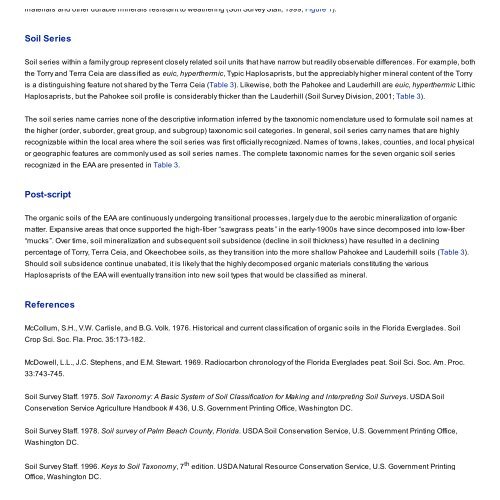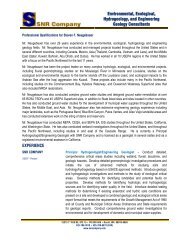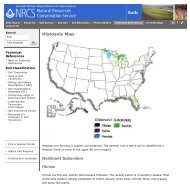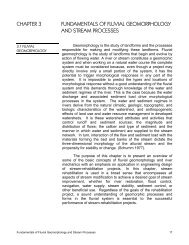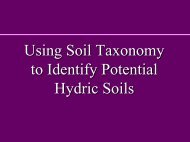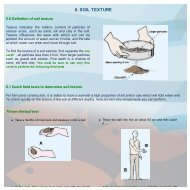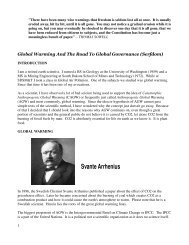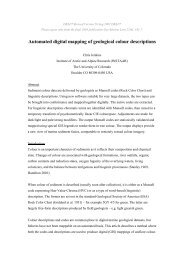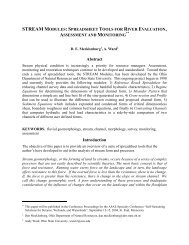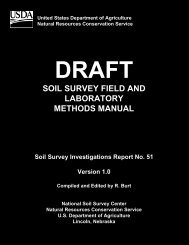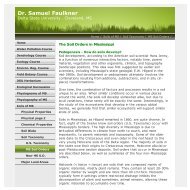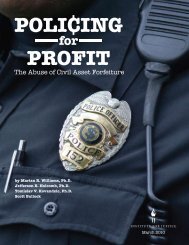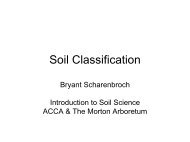SSAGR246_AG151_ Application of the Soil Taxonomy Key to the ...
SSAGR246_AG151_ Application of the Soil Taxonomy Key to the ...
SSAGR246_AG151_ Application of the Soil Taxonomy Key to the ...
You also want an ePaper? Increase the reach of your titles
YUMPU automatically turns print PDFs into web optimized ePapers that Google loves.
materials and o<strong>the</strong>r durable minerals resistant <strong>to</strong> wea<strong>the</strong>ring (<strong>Soil</strong> Survey Staff, 1999; Figure 1).<br />
<strong>Soil</strong> Series<br />
<strong>Soil</strong> series within a family group represent closely related soil units that have narrow but readily observable differences. For example, both<br />
<strong>the</strong> Torry and Terra Ceia are classified as euic, hyper<strong>the</strong>rmic, Typic Haplosaprists, but <strong>the</strong> appreciably higher mineral content <strong>of</strong> <strong>the</strong> Torry<br />
is a distinguishing feature not shared by <strong>the</strong> Terra Ceia (Table 3). Likewise, both <strong>the</strong> Pahokee and Lauderhill are euic, hyper<strong>the</strong>rmic Lithic<br />
Haplosaprists, but <strong>the</strong> Pahokee soil pr<strong>of</strong>ile is considerably thicker than <strong>the</strong> Lauderhill (<strong>Soil</strong> Survey Division, 2001; Table 3).<br />
The soil series name carries none <strong>of</strong> <strong>the</strong> descriptive information inferred by <strong>the</strong> taxonomic nomenclature used <strong>to</strong> formulate soil names at<br />
<strong>the</strong> higher (order, suborder, great group, and subgroup) taxonomic soil categories. In general, soil series carry names that are highly<br />
recognizable within <strong>the</strong> local area where <strong>the</strong> soil series was first <strong>of</strong>ficially recognized. Names <strong>of</strong> <strong>to</strong>wns, lakes, counties, and local physical<br />
or geographic features are commonly used as soil series names. The complete taxonomic names for <strong>the</strong> seven organic soil series<br />
recognized in <strong>the</strong> EAA are presented in Table 3.<br />
Post-script<br />
The organic soils <strong>of</strong> <strong>the</strong> EAA are continuously undergoing transitional processes, largely due <strong>to</strong> <strong>the</strong> aerobic mineralization <strong>of</strong> organic<br />
matter. Expansive areas that once supported <strong>the</strong> high-fiber “sawgrass peats” in <strong>the</strong> early-1900s have since decomposed in<strong>to</strong> low-fiber<br />
“mucks”. Over time, soil mineralization and subsequent soil subsidence (decline in soil thickness) have resulted in a declining<br />
percentage <strong>of</strong> Torry, Terra Ceia, and Okeechobee soils, as <strong>the</strong>y transition in<strong>to</strong> <strong>the</strong> more shallow Pahokee and Lauderhill soils (Table 3).<br />
Should soil subsidence continue unabated, it is likely that <strong>the</strong> highly decomposed organic materials constituting <strong>the</strong> various<br />
Haplosaprists <strong>of</strong> <strong>the</strong> EAA will eventually transition in<strong>to</strong> new soil types that would be classified as mineral.<br />
References<br />
McCollum, S.H., V.W. Carlisle, and B.G. Volk. 1976. His<strong>to</strong>rical and current classification <strong>of</strong> organic soils in <strong>the</strong> Florida Everglades. <strong>Soil</strong><br />
Crop Sci. Soc. Fla. Proc. 35:173-182.<br />
McDowell, L.L., J.C. Stephens, and E.M. Stewart. 1969. Radiocarbon chronology <strong>of</strong> <strong>the</strong> Florida Everglades peat. <strong>Soil</strong> Sci. Soc. Am. Proc.<br />
33:743-745.<br />
<strong>Soil</strong> Survey Staff. 1975. <strong>Soil</strong> <strong>Taxonomy</strong>: A Basic System <strong>of</strong> <strong>Soil</strong> Classification for Making and Interpreting <strong>Soil</strong> Surveys. USDA <strong>Soil</strong><br />
Conservation Service Agriculture Handbook # 436, U.S. Government Printing Office, Washing<strong>to</strong>n DC.<br />
<strong>Soil</strong> Survey Staff. 1978. <strong>Soil</strong> survey <strong>of</strong> Palm Beach County, Florida. USDA <strong>Soil</strong> Conservation Service, U.S. Government Printing Office,<br />
Washing<strong>to</strong>n DC.<br />
<strong>Soil</strong> Survey Staff. 1996. <strong>Key</strong>s <strong>to</strong> <strong>Soil</strong> <strong>Taxonomy</strong>, 7 th edition. USDA Natural Resource Conservation Service, U.S. Government Printing<br />
Office, Washing<strong>to</strong>n DC.


